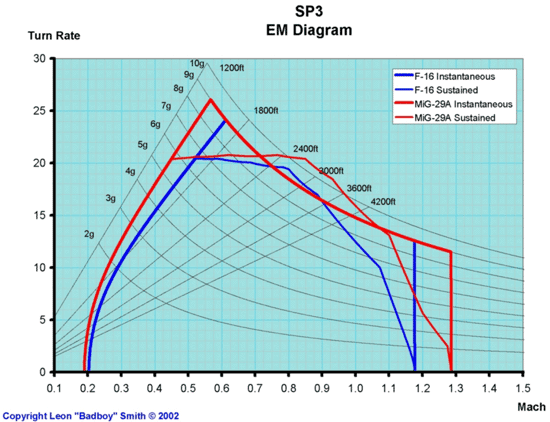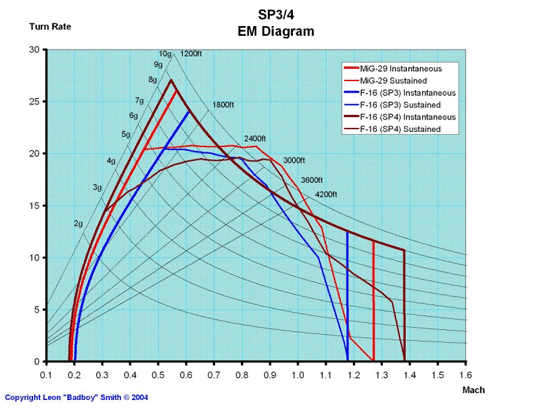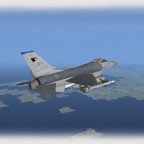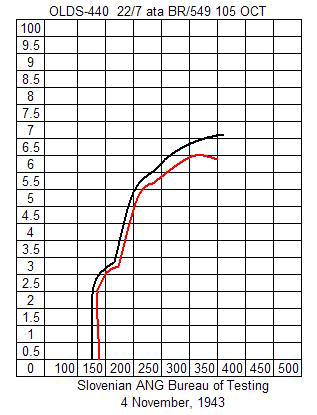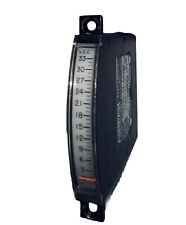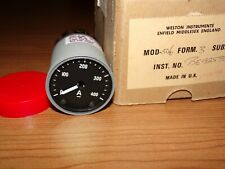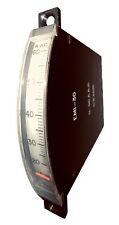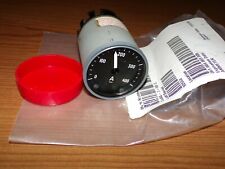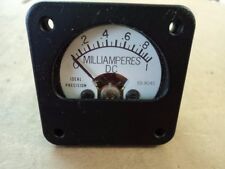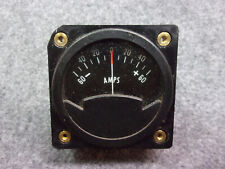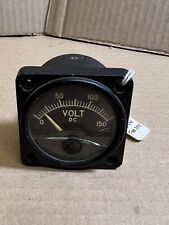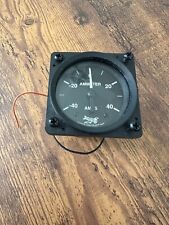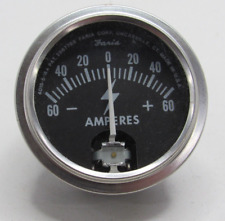MiG-29 v F-16
Now compare that with what happened in SP3, the diagram is shown below. Here you notice that the MiG-29 has improved, relatively speaking, and is now superior to the F-16 over the entire envelope, and has a smaller turn radius, but only marginally. The biggest difference, is of course, the fact that the F-16’s Ps = 0 curve can be seen to climb to the left, increasing as the speed decreased. That meant that the slower you got, the higher your sustained turn rate became, and that simply allows the pilot to hold full aft stick for best performance, a dramatic change from the original version that demanded proper energy management. Of course, just holding full aft stick for best results is not the way the aircraft is or should be flown! This reinforced the bad habits simulation pilots may have acquired flying other simulations with similarly flawed flight models, examples of such simulations abound. Despite that step in the wrong direction, the relative performance between the MiG-29 and the F-16 was still close, and even though the MiG-29 was more difficult to beat, it was, due to weaknesses in the Artificial Intelligence (AI), quite beatable.
What happened next, is that the default F-16 flight model changed to that seen in the first diagram, while the MiG-29 flight model remained the same as it was in SP3. The result is shown below, and notice the significant loss in sustained turning ability, of more than five degrees per second relative to the MiG-29:
Now, because the MiG-29 has remained the same in both SP3 and SP4 we can overlay it with both the SP3 and SP4 F-16 to see the difference, here it is:
By retaining the MiG-29 flight model from SP3 the default SP4 F-16 is now outclassed in terms of its manoeuvrability, conceding more than five degrees/second at low speed. That’s a lot to give away, when you consider that as little as two degrees per second is considered to be a decisive advantage! This is the biggest disparity in turning performance between the MiG-29 and F-16 in Falcon4 to date, and makes any protracted sustained turning engagement extremely difficult for the F-16 driver, even though the SP4 F-16 is slightly faster.
Just that comparison alone and the differences it makes to the MiG-29 engagement, aircraft handling and energy management are such that pilots converting from the SP3 to SP4 flight model would notice that they are no longer able to do what the F-16 has always been good at… turning!

